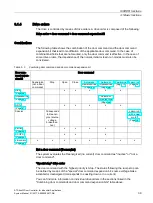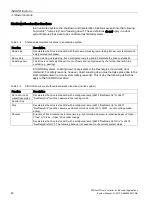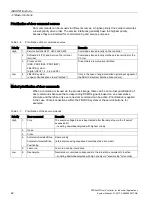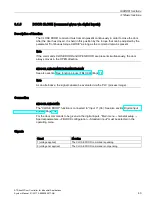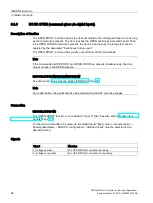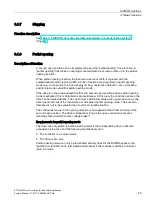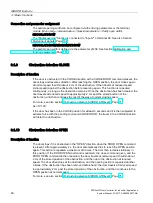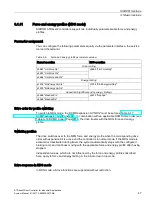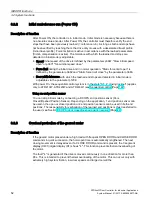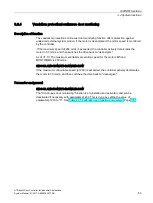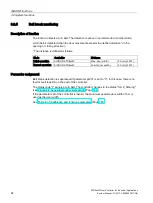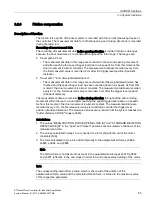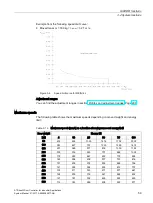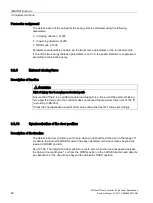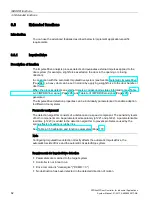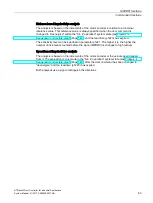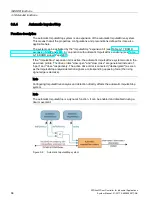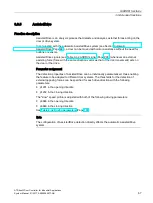
SIDOOR functions
3.2 System functions
ATD4xxW Door Controller for Industrial Applications
52
System Manual, 01/2017, A5E38080677-AB
3.2.2
Initial run/reference run (Power ON)
Description of function
After Power ON, the controller is in initial mode. Initial mode is necessary because there is
no absolute value encoder. After Power ON, the controller must therefore verify the end
stops that have been previously learned (= reference run). As long as both end stops have
not been verified by reaching them, the drive only moves with a decelerated travel profile
(initial travel profile). Force limitation is active in accordance with the learned parameters
(friction compensation is active). The tolerance with which the learned end stops are
detected in initial mode is adjustable.
●
Speed Initial speed of the drive is defined by the parameters p3667 "Slow initial speed
open" or p3671 "Slow initial speed close".
●
Force limit during the initial drive and in normal operation, "Static force limit open" is
defined by the parameter p3682 and "Static force limit close" by the parameter p3683.
●
Door width tolerance with which the learned end stops are detected in initial mode is
adjustable via the parameter p1208.
With power On, the sequential control system is in the state "S1: Z_closing lockout" (applies
only to ATD410W, ATD420W and ATD430W) (see Sequential control (Page 149)).
Using an end position sensor
You can skip initial mode by connecting a DCOPS end position sensor (Door
Closed/Opened Position Sensor). Depending on the application, 1 end position sensor can
be used in the open or closed position or 2 end position sensors can be used in both end
positions. The responsibility for verification of the learned end positions is thus transferred to
the user (see Section DCOPS (door closed/opened position sensor) (Page 49)).
3.2.3
Overload protection of the geared motor
Description of function
If the geared motor placed under a high load with frequent OPEN DOOR and CLOSE DOOR
commands in quick succession, the hold-open time is automatically lengthened. The next
closing movement is delayed even if a CLOSE DOOR command is present, the 7-segment
display (H401)/digital display (H1) shows "4". This function prevents thermal overloading of
the motor.
The fault "4" is generated if the drive is moved continuously in one direction for more than
65 s. This is intended to prevent thermal overloading of the motor. This can occur only with
extremely high system friction, low door speeds and large door widths.


